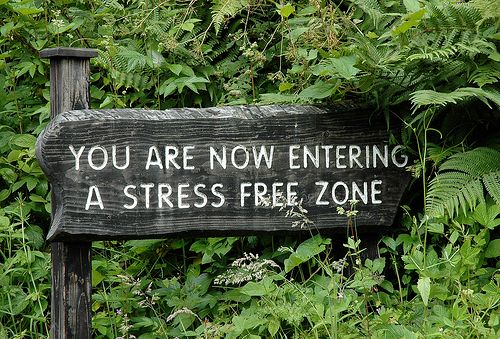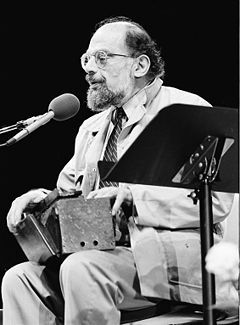The Plot Against Public Education
By BOB HERBERT, Politico
October 06, 2014
When a multibillionaire gets an idea, just about everybody leans in to listen. And when that idea has to do with matters of important public policy and the billionaire is willing to back it up with hard cash, public officials tend to reach for the money with one hand and their marching orders with the other. Gates backed his small-schools initiative with enormous amounts of cash. So, without a great deal of thought, one school district after another signed on to the notion that large public high schools should be broken up and new, smaller schools should be created.
This was an inherently messy process. The smaller schools-proponents sometimes called them academies-would often be shoehorned into the premises of the larger schools, so you’d end up with two, three or more schools competing for space and resources in one building. That caused all sorts of headaches: Which schools would get to use the science labs, or the gyms? How would the cafeterias be utilized? And who was responsible for policing the brawls among students from rival schools?
…
That was Bill Gates’s grand idea. From 2000 to 2009, he spent $2 billion and disrupted 8 percent of the nation’s public high schools before acknowledging that his experiment was a flop. The size of a high school proved to have little or no effect on the achievement of its students. At the same time, fewer students made it more difficult to field athletic teams. Extracurricular activities withered. And the number of electives offered dwindled.Gates said it himself in the fall of 2008, “Simply breaking up existing schools into smaller units often did not generate the gains we were hoping for.”
…
But Gates was by no means finished. He and his foundation quickly turned to the task of trying to fix the nation’s teachers.
…
Although he and his foundation were committed to the idea of putting a great teacher into every classroom, Gates acknowledged that there was not much of a road map for doing that. “Unfortunately,” he said, “it seems that the field doesn’t have a clear view on the characteristics of great teaching. Is it using one curriculum over another? Is it extra time after school? We don’t really know.”This hit-or-miss attitude-let’s try this, let’s try that-has been a hallmark of school reform efforts in recent years. The experiments trotted out by the big-money crowd have been all over the map. But if there is one broad approach (in addition to the importance of testing) that the corporate-style reformers and privatization advocates have united around, it’s the efficacy of charter schools. Charter schools were supposed to prove beyond a doubt that poverty didn’t matter, that all you had to do was free up schools from the rigidities of the traditional public system and the kids would flourish, no matter how poor they were or how chaotic their home environments.
Corporate leaders, hedge fund managers and foundations with fabulous sums of money at their disposal lined up in support of charter schools, and politicians were quick to follow. They argued that charters would not only boost test scores and close achievement gaps but also make headway on the vexing problem of racial isolation in schools.
None of it was true. Charters never came close to living up to the hype. After several years of experimentation and the expenditure of billions of dollars, charter schools and their teachers proved, on the whole, to be no more effective than traditional schools. In many cases, the charters produced worse outcomes. And the levels of racial segregation and isolation in charter schools were often scandalous. While originally conceived a way for teachers to seek new ways to reach the kids who were having the most difficult time, the charter school system instead ended up leaving behind the most disadvantaged youngsters.
Shockingly Widespread Standardized Test Cheating in Schools in 39 States
By Elizabeth Hines, Alternet
October 6, 2014
This week in Atlanta, the trial of a dozen former educators and administrators charged with conspiring to manipulate test scores in Atlanta’s public schools got underway in Fulton County Superior Court. Characterized by the prosecuting district attorney, Fani Willis, as “a widespread, cleverly disguised conspiracy to illegally inflate test scores and create a false impression of academic success for many students in the Atlanta Public Schools system,” the case could earn its defendants as many as 35 years behind bars, should they be found guilty of the charges against them.
The Atlanta case has gained national attention in large part because of the scope of the cheating documented and the number of educators implicated (initially, more than 180 educators at 44 schools were involved, according to the Atlantic). But is Atlanta the singular case of a school system gone awry in a sea of otherwise compliant districts? Or is the systemic cheating alleged in this case shockingly prevalent in America’s schools – far beyond what most of us can imagine?
According to the National Center for Fair & Open Testing (FairTest), it’s time to prepare to be shocked. The organization has recently compiled data indicating that the scandal in Atlanta is “just the tip of the iceberg” when it comes to cheating on standardized tests in our nation’s schools. Specifically, FairTest has found documented cases of cheating, and in some cases, systematic manipulation of scores, in 39 states and the District of Columbia, over the last five years alone. The organization has also identified more than 60 methods administrators and teachers have used to alter student scores on these tests, from urging low-scorers to be absent the day of the test, to shouting out and otherwise indicating correct answers during testing.
The great charter school rip-off: Finally, the truth catches up to education “reform” phonies
by Jeff Bryant, Salon
Thursday, Oct 2, 2014 05:25 PM EST
Last week when former President Bill Clinton meandered onto the topic of charter schools, he mentioned something about an “original bargain” that charters were, according to the reporter for The Huffington Post, “supposed to do a better job of educating students.”
A writer at Salon called the remark “stunning” because it brought to light the fact that the overwhelming majority of charter schools do no better than traditional public schools. Yet, as the Huffington reporter reminded us, charter schools are rarely shuttered for low academic performance.
But what’s most remarkable about what Clinton said is how little his statement resembles the truth about how charters have become a reality in so many American communities.
In a real “bargaining process,” those who bear the consequences of the deal have some say-so on the terms, the deal-makers have to represent themselves honestly (or the deal is off and the negotiating ends), and there are measures in place to ensure everyone involved is held accountable after the deal has been struck.
But that’s not what’s happening in the great charter industry rollout transpiring across the country. Rather than a negotiation over terms, charters are being imposed on communities – either by legislative fiat or well-engineered public policy campaigns. Many charter school operators keep their practices hidden or have been found to be blatantly corrupt. And no one seems to be doing anything to ensure real accountability for these rapidly expanding school operations.
Instead of the “bargain” political leaders may have thought they struck with seemingly well-intentioned charter entrepreneurs, what has transpired instead looks more like a raw deal for millions of students, their families, and their communities. And what political leaders ought to be doing – rather than spouting unfounded platitudes, as Clinton did, about “what works” – is putting the brakes on a deal gone bad, ensuring those most affected by charter school rollouts are brought to the bargaining table, and completely renegotiating the terms for governing these schools.
…
Startling examples of charter school financial malfeasance revealed by the authors -just in Pennsylvania - include an administrator who diverted $2.6 million in school funds to a church property he also operated. Another charter school chief was caught spending millions in school funds to bail out other nonprofits associated with the school. A pair of charter school operators stole more than $900,000 from the school by using fraudulent invoices, and a cyber school entrepreneur diverted $8 million of school funds for houses, a Florida condominium, and an airplane.What’s even more alarming is that none of these crimes were detected by state agencies overseeing the schools. As the report clearly documents, every year virtually all of the state’s charter schools are found to be financially sound. The vast majority of fraud was uncovered by whistleblowers and media coverage and not by state auditors who have a history of not effectively detecting or preventing fraud.
Pennsylvania spends over a billion dollars a year on charter schools, and the $30 million lost to fraud documented in this study is likely the minimum possible amount. The report authors recommend a moratorium on new charter schools in the state and call on the Attorney General to launch an investigation.
…
Pedro Noguera, explained, “Charter schools are frequently not accountable. Indeed, they are stunningly opaque, more black boxes than transparent laboratories for education.”Rather than having to show their books, as public schools do, Noguera contended, “Most charters lack financial transparency.” As an example, he offered a study of KIPP charter schools, which found that they receive “‘an estimated $6,500 more per pupil in revenues from public or private sources’ compared to local school districts.” But only a scant portion of that disproportionate funding – just $457 in spending per pupil – could accurately be accounted for “because KIPP does not disclose how it uses money received from private sources.
In addition to the difficulties in following the money,” Noguero continued, “there is evidence that many charters seek to accept only the least difficult (and therefore the least expensive) students. Even though charter schools are required by law to admit students through lotteries, in many cities, the charters under-enroll the most disadvantaged children.”
This tendency of charter schools operations provides a double bonus as their student test scores get pushed to higher levels and the public schools surrounding them have to take on disproportionate percentages of high needs students who push their test score results lower. Noguera cited a study showing that traditional schools serving the largest percentages of high-needs students are frequently the first to be branded with the “failure” label.
…
These new guidelines are intended to address numerous examples of charter school failure to disclose essential information about their operations, including financial information, school discipline policies, student enrollment processes, and efforts to collaborate with public schools.For instance, the report notes that the director of the state Office of Open Records in Pennsylvania, “testified that her office had received 239 appeals in cases where charter schools either rejected or failed to answer requests from the public for information on budgets, payrolls, or student rosters.” In Ohio, a charter chain operated by for-profit White Hat Management Company, “takes in more than $60 million in public funding annually … yet has refused to comply with requests from the governing boards of its own schools for detailed financial reports.” In Philadelphia, the report authors found a charter school that made applications for enrollment available “only one day a year, and only to families who attend an open house at a golf club in the Philadelphia suburbs.” In New York City, where charter schools are co-located in public school buildings, “public school parents have complained that their students have shorter recess, fewer library hours, and earlier lunch schedules to better accommodate students enrolled at the co-located charter school.” The report quotes a lawsuit filed by the NAACP, which documented public school classrooms “with peeling paint and insufficient resources” made to co-locate with charters that have “new computers, brand-new desks, and up-to-date textbooks.”
…
Unsurprisingly, the report got an immediate response from the National Alliance for Public Charter Schools, arguing against any regulation on charters. That organization’s response cites “remarkable results” as an excuse for why charters should continue to be allowed to skirt public accountability despite the fact they get public money. However, whenever there is close scrutiny of the remarkable results the charter industry loves to crow about, the facts are those results really aren’t there.
…
There’s little doubt now that the grand bargain Bill Clinton and other leaders thought they were making with charter schools proponents was a raw deal.
Reading, Writing, Ransacking
By Charles P. Pierce, Esquire
October 7, 2014
These are tough times for education “reformers,” those well-meaning, usually wealthy dilettantes who are only making their comfortable living working “for the kids.” Michelle Rhee, their warrior queen, has been exposed as an intellectual three-card monte dealer, and has been forced to hand over her sword and buckler to Campbell Brown, a forgettable former CNN anchor Muppet whose dedication to democracy and “transparency” is, well, eccentric at best, as she crusades against teacher tenure so that local school boards — like the one presently embarrassing itself in Colorado — can make sure no inconvenient thinking manages to leach into the subject population being experimented upon by the people who pay Brown her salary. Whoever they are. The charter school movement increasingly looks like a Trojan Horse for the corporate education complex — demanding a complete lack of accountability and ending up, in many cases, as the pedagogical equivalent of a Texas fertilizer plant. This barely concealed strain of authoritarianism — the lack of accountability, the delicately eliminationist rhetoric aimed at public school teachers, the shadowy donors whom people like Brown decline to reveal, the kleptocratic reliance on corporate money — is more than sufficiently similar to the way corporations generally have looted the commonwealth to make you wonder if public education isn’t headed the way of the country’s manufacturing base.
…
In a closed-door session that lasted 17 minutes and that included a single public comment, the Philadelphia School Reform Commission — more about them later — unilaterally blew up the contract under which the Philadelphia teachers union had been operating. In addition to socking the city’s teachers for their own health care, the commission also cut off the benefits being paid to retired teachers, most of them elderly, and all of them having worked for years to earn these benefits that yesterday vanished without even the pretense of debate. If this reminds you of what happened to the pensions of firemen in New Jersey, and public workers in Wisconsin, and manufacturing grunts almost everywhere in the private sector, you are unusually sharp this morning and do not need that second cup of coffee.
…
The politics of the move are as simple as they are grotesque. Pennsylvania governor Tom Corbett has the approval rating of malaria right now and, if nothing changes, he’s on his way to a historic drubbing in November. Picking this fight may be Corbett’s last chance. However, he has picked the fight right in the middle of an ongoing scandal regarding the state’s system of charter schools which, because of the same lack of transparency that surrounds Campbell Brown’s financial angels and that surrounded the meeting in Philadelphia yesterday, has become a target-rich environment for the accountability-free grifters of the “reform” movement.
…
(T)he charter school movement has come to (this) in Philadelphia — a “flip this school” real-estate scheme. Lovely. And that’s not even to get into the scandal around the state’s “Cyber Charter,” an Internet-based school the founder of which is currently on trial for funneling millions of dollars away from the school and into his pockets, with which he allegedly bought himself a plane, and condos for his mother and girlfriend.
…
They all have so very much to answer for, the people who have decided to enrich themselves by bashing public school teachers and, in doing so, putting the entire philosophy of public education, one of the lasting contributions to society of the American political commonwealth, at serious risk. No wonder they operate secretly, and in the shadows, and beyond the reach of public accountability. They are burglarizing the future for their own profit.






 The first feature-length motion picture with synchronized dialogue sequences, its release heralded the commercial ascendance of the “talkies” and the decline of the silent film era. Produced by Warner Bros. with its Vitaphone sound-on-disc system, the movie stars Al Jolson, who performs six songs. Directed by Alan Crosland, it is based on a play by Samson Raphaelson.
The first feature-length motion picture with synchronized dialogue sequences, its release heralded the commercial ascendance of the “talkies” and the decline of the silent film era. Produced by Warner Bros. with its Vitaphone sound-on-disc system, the movie stars Al Jolson, who performs six songs. Directed by Alan Crosland, it is based on a play by Samson Raphaelson.